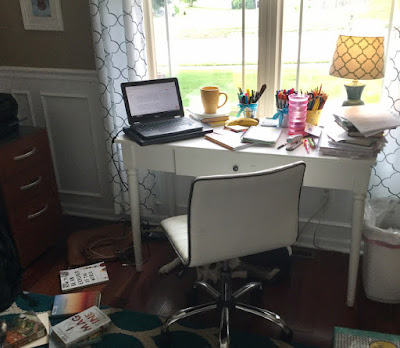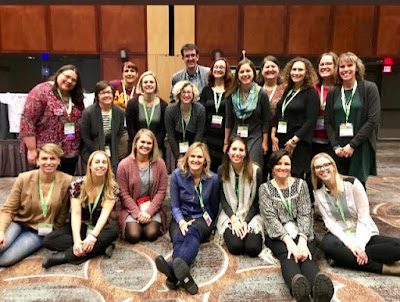2 Ways To Get Unstuck in Your Teaching
So, where does a literacy teacher turn when she's stuck? The public library, of course. While my children browsed the manga section, I ventured off to nonfiction, to find...something. I wasn't even sure what I was looking for, so I just walked.
I wandered a bit and found myself staring at books on creativity. As I scanned titles, I knew this was the perfect place to be. I quickly found several titles:
- Unstuck: 52 Ways to Get And Keep Your Creativity Flowing at Home, At Work and In Your Studio by Noah Scalin
- How To Be An Explorer of the World by Keri Smith
- InGenius: A Crash Course on Creativity by Tina Seelig
- The Rise: Creativity, The Gift of Failure and the Search for Mastery by Sarah Lewis
- Imagine by Jonah Lehrer
After reading two and a half books, two lessons have jumped out at me this week (besides the obvious READ A BOOK):
1. Slow down and notice the present
2. Expand your perspective; stop seeing things in only one way
First a quick overview of the books I read so far...
The first book I dove into was Unstuck by Noah Scalin. On page 9, I was hooked. "The projects contained within," Scalin writes, "are not about a specific tangible outcome but rather about causing your brain to jump out of the groove it's been caught in. The idea is to do a task that will cause your thinking to move sideways and open you up to new opportunities and ideas that have been waiting to be discovered right next to where you're looking now!"
After laying out The Big Seven, his lessons on creativity that he learned in his Skull-A-Day project (www.skulladay.com), Scalin organizes the book into projects that range from 30 second projects all the way up to multi hour projects.
Next I picked up Keri Smith's How To Be An Explorer of the World. The book is a series of exploration tasks where readers are asked to look at the world as a scientist - to live in wonder
The book lays out a series of ways to notice details in our world, like mapping the cracks in a sidewalk or documenting an overheard conversation. Readers are challenged to slow down and see what is right here in front of us, that we have not paid attention to.
The third book, which I'm not finished with yet, is InGenius: A Crash Course on Creativity by Tina Seelig, a professor at Stanford University who teaches a class on creativity and innovation. In the introduction, Seelig says that "as we approach adulthood, we are expected to be serious, to work hard, and to be 'productive'" (8). Yes, we teachers would yell in agreement, that is what we're trying to get our students to embrace. However, there is a negative side-effect of this: "With this type of external pressure and messaging, we shut down our natural curiosity and creativity as we strive to deliver what is expected of us...we trade our rich imagination in order to focus on implementation." Whoa.
Seelig's book is built on her concept of the Innovation Engine, which includes both internal and external ways to enhance creativity. The internal parts are: knowledge, imagination and attitude; and the external parts are resources, habitat and culture.
I can hear some of you right now, This is all good and well, but I have a curriculum to teach, data to collect, and actual instruction that needs to take place in my classroom. I don't have time for all this artsy-fartsy stuff.
Respectfully, I'm going to disagree. The future needs innovative problem-solvers, creative, critical thinkers. It needs people who can imagine new possibilities, not those who can be compliant followers of what they're told. My classroom has never felt more dead than when I let data collection and assessment drive my daily practice. If we really want to energize our classrooms, we need to get back to what really matters: the kids in our classes.
So, what can I use to help me get unstuck?
1. Slow down and notice the present This is both for me and for my students. Reading about being an explorer made me think about the mindset it takes to live as an explorer. We will need a wide-awake mindset, which allows us to take in what's going on around us - the big and the small things. And we need an open mindset, which allows us to view things with curiosity instead of judgement. I want to spend some time thinking about how to create a culture that embraces this mindset for everyone in my classroom - from Day #1, we are explorers, learning together.
2. Expand your perspective; stop seeing things in only one way I teach a reading intervention class in a high school. For many of my kids, this is their fourth year (or more) in an intervention class. Really inspires hope, doesn't it? So what if we re-framed it? What if we stopped thinking about this class as fixing broken readers and started thinking about it as enhancing the talents the kids already have? What if I stopped planning based on what I think my kids need and started looking at what they want? What if we approach reading from multiple perspectives? Writing from multiple perspectives? And what if I don't define those perspectives, what if the students do? Again here, how do I create, from Day #,1 a culture of multiple perspectives so that it infuses everything we do instead of just book choice?
The first week of summer vacation has left me with far more questions than answers, but it's also left me with the butterflies-in-my-stomach feeling of excitement and hope. My notebook is full of notes from books, which wanders into ideas for class, which wanders to new books I've found online, which leads to grant ideas...
My desk looks like a hurricane went through.
But I am so happy.







Comments
Post a Comment